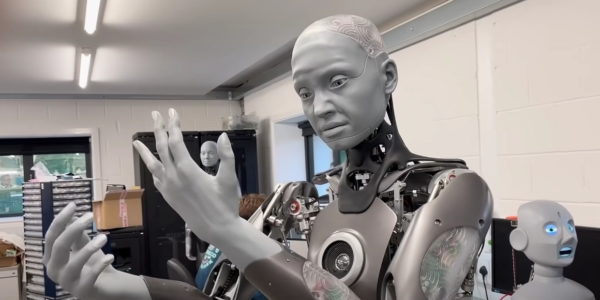The Economist reported on humanoid robots, including on Ameca, a humanoid social robot which can’t walk or perform other practical tasks, but has very lifelike facial expressions.
Referring to Tesla’s new Optimus humanoid robot, they said, “The unveiling featured a video of Optimus moving parts in a Tesla factory. Yet car factories are already filled with the world’s most successful robots—transporting components around, welding and painting parts, and assembling vehicles. These robots do not look like people because they don’t need to.”
This seems to be the crux of the matter.
News about humanoid robots seems to focus on how humanoid they are becoming, what human-like actions or skills they have or can simulate, and how close they come to being in any way useful (usually, it is true, not very close).
The assumption always seems to be that there is a good reason to want a humanoid robot.
What are they good for?
Elder care is one of the first things apologists for humanoid robots turn to, largely ignoring the fact that successful example of elder care robots have not so far been humanoid. One of the most popular is actually seal-like, and plain geometric shapes turn up quite a bit as well.
In fact, the idea of humanoid robots as caretakers brings up the possibility of deceit and confusion, which most of us agree would not be desirable in a care robot.
“What use cases can you think of for human-looking robots that aren’t pretending to be people?” asks Hackaday, sensibly enough.
When you need support and service for your Indramat motion control systems, you probably aren’t using them to drive humanoid robots. Nonetheless, our decades of experience with Indramat technology mean that we can keep you up and running — or get you back up and running fast if it’s too late for that.
Call now for immediate assistance.
